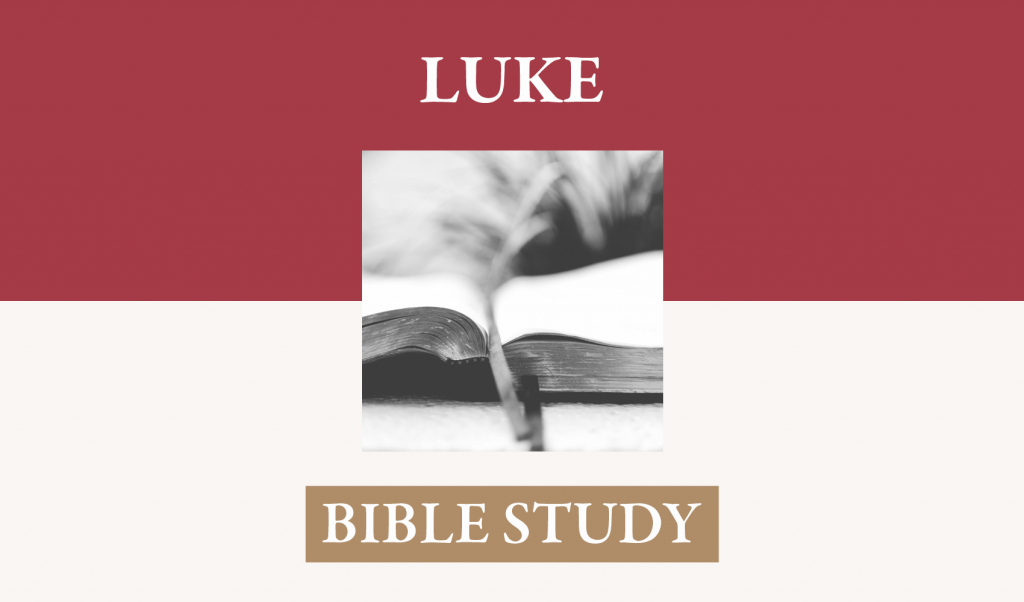Introduction: The events we have studied in Acts would have no meaning apart from the events of these verses. The plain and understated historical narrative of these events serves the purpose of Luke from a literary and historical standpoint and also highlights the irreducible necessity of the time-space reality of the bodily resurrection.
In accordance with the compelling purpose, structure and method of Luke, this chapter sets forth the intertwining of events in a framework designed to show the “certainty concerning the things you have been taught,” [1:4} and constitute those events Luke summarized in the sentence, “He presented himself alive after his suffering by many proofs.” [Acts 1:3] The proofs arise both from the evidence within the historical events themselves as well as the concentrated purpose of biblical revelation.
From the standpoint of historical necessity, this speaks to the completion of the obedience of the last Adam, the one who brings human nature to its mature point of righteousness. Now, in Christ, the covenant of obedience unto righteousness for life has been brought to culmination and has been stamped with a divine seal by the resurrection of this human from the dead. If one will not confess that Jesus is the Christ come in the flesh (1 John 4:2, 3) and that in that same flesh he was slain for sinners (Hebrews 10:10; 1 Peter 2:24) and in that same flesh, though now glorified, God raised him from the dead (Romans 10:9 Acts 2:24,32, 36), he is not born of God.
I. The Naked Facts (verses 1-3) – The entire theology of forgiveness, resurrection, glorification, and the nature of eternity is based on the truthfulness of these brute facts reported so dispassionately by Luke. Other details are inserted within the chronology by the three other reports given in the Gospels (and there is plenty of room for their great variety), but Luke’s report is meant to give a mere abstract of the events to eliminate any contrived explanation for the absence of Jesus from the tomb.
A. “The women” mentioned in 23:55 and named partially in 24:10 had prepared something to anoint the body of Jesus. Out of respect for the body of the dead in general and out of love for Jesus in particular, they could not abide to think of the ravages of death making a pile of stinking corruption out of the physical remains of this most attractive, profound, truthful, forthright, kind, and unimpeachably good man they had ever known. When Jesus asked for the tomb of Lazarus to be opened, part of the objection raised by the sisters was the embarrassing reality of the stench of indignity forced upon the human body by the enemy death.
B. They went as early as possible, on the morning after the Sabbath, Jesus now having occupied the tomb on portions of three separate days, including a full Sabbath. They took the spices and ointments they had prepared carefully, both for aroma and perhaps for some embalming power, with the full expectation that they would have access to his body. Those that had rolled the stone over the tomb, now for these weak women, certainly would roll it away slightly and briefly for this act of honor for the dead.
C. What they found was that the tomb baffled them. The stone already was completely rolled away from the tomb, no squeezing through was required after a hesitant and begrudging permission, but full access immediately was given, and no guards were there to hinder. They went in, but the body they had come to anoint and nestle with spices was not there. “They did not find the body of the Lord Jesus.”
II. The Report of the Angels (verse 4-7)
A. How startling it must have been for these women, in the midst of perplexity and imagining (as is human propensity) the darkest explanations of this profound absence, that the men in dazzling apparel appeared. The frequency with which the response of fear initiates these encounters in Scripture with the overpowering grandeur of these beings that live in the presence of God and do his bidding without question or reservation shows the glory of the heavenly state (Luke 1:11, 12; 28-28; 2:9, 10; Revelation 19:9, 10). The closer we come to true purity and holiness with a corresponding external manifestation of their beauty and power, the more overwhelmed we are with our present state of weakness and fallenness. One of the marvels of the incarnation was Christ’s emptying himself of this manifestation of splendor (Philippians 2:6, 7).
B. 5b – The profound implications of a simple question. “Why do you seek the living among the dead?” Their coming to the grave was a coming to the place of the dead. Jesus is the resurrection and the life. If they were seeking Jesus, they should not seek him there. What an elegant and compelling way to fix in their minds the importance of the coming proclamation. The question itself has no rational answer, for they could give no reason why it was at all acceptable to seek the living among the dead.
C. The first explanation is the only reasonable explanation. “He is not here but has risen.” Matthew records one of the possible explanations of the empty tomb in 27:62-66 and 28:12, that the disciples had come and stolen the body. The unlikelihood of this is reinforced by several considerations. They already had forsaken him in fear of death, and now were most unlikely to create a ruse that would result in their death. The disciples themselves, however, knew that they had not stolen the body and so that rumor had no sway over them other than to diminish the total possible number of explanations. The historical order of the early appearance of the women and the disciples’ complete surprise at the event show the pure fantasy of any other explanation.
D. The angels referred to the predictions that Jesus gave of his death and subsequent resurrection. “Remember how he told you while he was still in
E. Must – verse 7 (See also verses 26, 44) – “Must be delivered, . . . must suffer these things, . . . must be fulfilled.” All of these things must be fulfilled because Jesus had foretold them and because they were prophesied in Scripture, which cannot fail. Their necessity also unfolds in another way.
1.. They must take place because they are necessary for God not to deny Himself, for the promise of God to Himself cannot be broken. If he promised eternal life before the ages began {Titus 1:2] then the promise was made within Himself. In 2 Timothy Paul affirms, by revelation, that saving grace was given to us “in Christ Jesus before the world began.” A grace given prior to creation means that Christ received the assignment on behalf of those given to Him by the Father to bear their iniquity [Isaiah 53:4-10]
2. These things were necessary, for the nature of things morally as God’s character overrules all of creation, eternal life can come only to those who owe no debt of wrath for their disobedience to God’s law. Christ grants eternal life as being its author through the perfections of his own obedience and his substitutionary death.
III. The Proclamation of the Women (verses 8-12) – After the angelic proclamation to the women, the first bearers of the good news from “man to man” was the bearing of the news of this event from the women to the remaining eleven disciples (9, 10). Nowadays, when a publisher wants to sell a book, he fills several endorsement pages with recommendations from publicly recognized teachers with some collateral of credibility and rational and critical judgment about the topic of the book. He would not select unknowns or people reputed to be unreliable in making critical judgments about important issues whose recommendation would give no enhancement to the possibility of sales or public acceptance of the book. These first announcers of the gospel were among the least likely to be selected if the “resurrection story” were simply a movement they were inventing and hoping would catch on. Ironically, the public incredibility of these witnesses is a powerful evidence of the truth of the event.
A. Upon seeing the evidence, and hearing the angelic explanation, they remembered his words. These words now ringing in their memory gave them the certainty that indeed the Lord has risen. Had the Lord predicted it, and they had found the tomb still occupied with his body, belief in his words would have been an absurdity worthy only of those duped by false prophets. “But in fact Christ has been raised from the dead” (1 Corinthians 15:20), fulfilling his words, justifying him as a true prophet, and therefore verifying his claim to be the Son of God and the only one through whom anyone can know the Father and receive the gift of the Spirit and all the accompanying privileges and blessings.
B. Even to the apostles, who knew these women that had been devoted followers of Jesus, were not disposed to believe them. This event was so strange, that to them even the report of those that had nothing to gain but further social embarrassment had they merely fabricated such a fantasy, “seemed to them like an idle tale.” We often believe only what we expect to hear or what fits neatly within the framework of our worldview. If the event, or the report of the event, shatters the boundaries of what we are predisposed to believe, it is seen, by mere presupposition, as untrue. When it proves to be true, then we have to rearrange our assumptions about reality in order to accommodate this new state of things. The resurrection of Jesus changed everything for everybody.
C. Peter, accompanied by John as we know from John 20:3-10, astounded by this report and having an intense existential personal investment in what had happened to Jesus (Luke 22:54-62), went to check on this single reported fact: the tomb was empty. As yet he did not remember what Jesus had said. If he remembered the words, he had no framework of understanding the intricate relations of the messianic prophecies and redemptive purpose. Soon, however, he would be brought to see this as irreducibly at the heart of the entire Old Testament covenantal framework (1 Peter1:20; 2 Peter 1:16-21). This would come through the gift of the Holy Spirit to call Jesus’ teachings to their remembrance and empower him and the others to preach at Pentecost and beyond. On that first day of real historically fulfilled gospel proclamation Peter said, “God raised him up, loosing the pangs of death, because it was not possible for him to be held by it” (Acts 2:24). For the present, however, Peter could only go and, perfectly consistent with the report he had received as an idle tale, view the fact, concur in the experience of the on site evidence, and go home marveling at “what had happened.” There was more marveling to be done (2 Peter 1:3, 4) and even more to follow when the resurrected and ascended Christ returns in glory (1 Peter 4:13; 2 Thessalonians 1:9, 10).






















